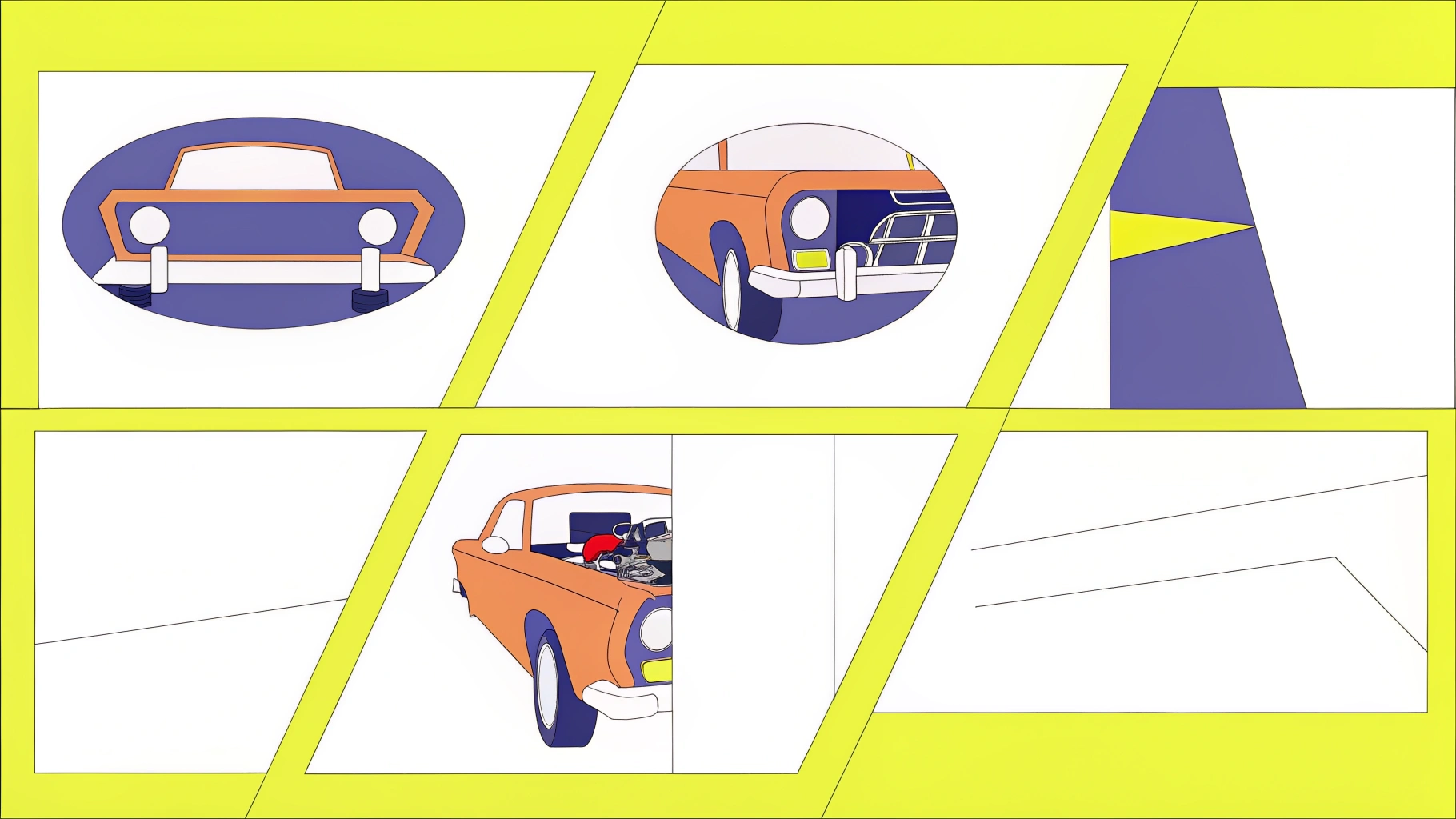Overview
The article presents effective strategies for creating engaging classic car restoration reels that seamlessly incorporate narrative elements. It underscores the crucial role of storytelling, high-quality visuals, and audience engagement techniques, all of which are essential for fostering a deeper connection with viewers. By showcasing how these elements can significantly enhance the overall impact and appeal of restoration content, the article offers actionable insights that resonate with the audience’s needs.
Introduction
Crafting a compelling narrative around classic car restoration transforms a simple video into an engaging journey that resonates deeply with viewers. By weaving together the vehicle’s rich history, the challenges faced during refurbishment, and the emotional highs of the restoration process, content creators can captivate their audience like never before.
However, how can one effectively balance storytelling with visual techniques? This balance is crucial not only to showcase the artistry of restoration but also to foster a sense of community among classic car enthusiasts.
Craft Compelling Narratives for Restoration Reels
To create engaging narratives for classic car refurbishment reels, begin by outlining the story arc that encapsulates the refurbishment journey. Start with the vehicle’s history, emphasizing its significance and the challenges encountered during the repair process. Employ storytelling techniques such as emotional hooks and character development, treating both the car and the restorer as central figures in the narrative. For instance, a reel could illustrate the car’s initial condition, showcase key restoration milestones, and culminate in a dramatic final reveal that underscores the transformation.
Incorporating personal anecdotes or insights from the restorer adds layers of authenticity, making the narrative resonate more profoundly with the audience. Quotes from passionate restorers, such as Mike Hall, who has , enhance emotional engagement. This approach captivates the audience and encourages them to share their own experiences, fostering a sense of community around the content. Additionally, utilizing voiceovers or on-screen text effectively guides viewers through the narrative, enhancing their understanding and emotional connection to the project.
Citing educational programs like McPherson College’s automotive refurbishment program, which draws approximately 160 applicants for only 60 positions annually, demonstrates the skills involved in refurbishment and the increasing interest in this area. Highlighting initiatives such as the Chicago nonprofit that teaches young people vehicle refurbishment further emphasizes the transformative power of this craft. By intertwining these components, automotive brands can create captivating classic car restoration reels with narrative that not only highlight the skill of refurbishment but also connect with their audience.

Utilize Effective Visual Techniques to Enhance Engagement
To enhance interest in classic car restoration reels, it is essential to prioritize that meticulously captures the restoration journey. Close-up shots should be utilized to showcase intricate details, such as engine rebuilds and paint jobs. Time-lapse sequences can effectively illustrate the transformation over time. Dynamic angles and movements, including panning across the vehicle or employing drone footage for dramatic reveals, add significant visual interest. Furthermore, color grading plays a crucial role in evoking emotions; for instance, a vintage car may benefit from a warm, nostalgic palette that resonates with its history. Incorporating graphics or annotations can clarify complex processes, thereby enhancing the educational value of the content. Moreover, storytelling is vital; creating classic car restoration reels with narrative that emotionally resonates with audiences can greatly boost engagement. Data from the automotive sector suggest that video content can result in a 68% rise in closing rates, underscoring the significance of captivating visuals in prompting audience action. To avoid typical pitfalls, ensure that the visuals in the classic car restoration reels with narrative align with the storyline, forming a unified story that engages viewers and fosters a stronger bond with the revitalization process.

Engage with Your Audience Through Strategic Social Media Practices
To effectively engage your audience and cultivate a vibrant community around classic car refurbishment, it is essential to implement that promote interaction, such as sharing classic car restoration reels with narrative.
Begin by responding promptly to comments and messages; this demonstrates that you value your audience’s input.
Employ surveys and inquiries regarding recovery preferences to encourage followers to express their views and experiences, significantly enhancing interaction. For instance, statistics indicate that nearly one-third of automotive shoppers spend considerable time researching on mobile devices, underscoring the importance of engaging them where they are active.
Hosting live Q&A sessions facilitates real-time conversations on repair techniques and tips, further improving interaction.
Additionally, encourage user-generated content by inviting followers to showcase their own projects in classic car restoration reels with narrative using a designated hashtag. This not only cultivates community but also provides fresh content for your channels.
Consistently review interaction metrics to determine what resonates with your audience, allowing you to refine your strategy and focus on content that fosters participation.
Successful case studies, such as a remarkable 1,500% increase in sales for Manny’s Deli through effective social media engagement, illustrate the potential impact of these strategies.
Emphasizing two-way communication is crucial; brands must interact with fans by responding to comments and messages promptly to build trust and loyalty.

Conclusion
Crafting compelling narratives for classic car restoration reels not only showcases the artistry involved in refurbishment but also deepens the emotional connection with the audience. By weaving together the vehicle’s history, the challenges faced during restoration, and the personal stories of the restorer, these narratives transform simple video content into engaging storytelling that resonates with viewers.
The article emphasized several key strategies to enhance these restoration reels. Effective visual techniques, such as high-quality video production and dynamic angles, combined with strategic social media practices, play a crucial role in capturing attention and fostering community. Emotional hooks, personal anecdotes, and interactive audience engagement further illustrate how automotive brands can elevate their storytelling efforts and create a lasting impact.
Ultimately, the significance of these strategies extends beyond mere content creation; they cultivate a passionate community around classic car restoration. By embracing these practices, brands can showcase their expertise and inspire others to share their own restoration journeys, fostering a sense of belonging among classic car enthusiasts. Engaging narratives and effective visual storytelling are not just tools for marketing—they are essential components in celebrating the timeless craft of car restoration.
Frequently Asked Questions
What is the first step in creating narratives for classic car refurbishment reels?
The first step is to outline the story arc that encapsulates the refurbishment journey, starting with the vehicle’s history and its significance.
How should the challenges during the repair process be presented in the narrative?
The challenges encountered during the repair process should be emphasized to highlight the journey and the effort involved in the refurbishment.
What storytelling techniques can enhance the narrative of a restoration reel?
Techniques such as emotional hooks and character development can enhance the narrative, treating both the car and the restorer as central figures.
What elements can be included to make the narrative more authentic?
Incorporating personal anecdotes or insights from the restorer and quotes from passionate restorers can add layers of authenticity and emotional engagement.
How can the narrative of the restoration process be structured?
The narrative can illustrate the car’s initial condition, showcase key restoration milestones, and culminate in a dramatic final reveal that underscores the transformation.
What role do voiceovers or on-screen text play in restoration reels?
Voiceovers or on-screen text effectively guide viewers through the narrative, enhancing their understanding and emotional connection to the project.
How can educational programs be referenced in the narratives?
Citing educational programs like McPherson College’s automotive refurbishment program can demonstrate the skills involved in refurbishment and the increasing interest in this area.
What initiatives can be highlighted to emphasize the craft of vehicle refurbishment?
Highlighting initiatives such as a Chicago nonprofit that teaches young people vehicle refurbishment can emphasize the transformative power of this craft.
What is the ultimate goal of creating captivating classic car restoration reels?
The goal is to highlight the skill of refurbishment and connect with the audience, fostering a sense of community around the content.

